Editorial "Wiley"
Se han encontrado 30 CoincidenciasUbuntu Linux Toolbox: 1000+ Commands for Ubuntu and Debian Power Users. Second Edition
Linux
130 Visitas | 225 Descargas | 2015-02-24 21:49:00 | cbustillo
This updated bestseller from Linux guru Chris Negus is packed with an array of new and revised material As a longstanding bestseller, Ubuntu Linux Toolbox has taught you how to get the most out Ubuntu, the world's most popular Linux distribution. With this anticipated new edition, Christopher Negus returns with a host of new and expanded coverage on tools for managing file systems, ways to connect to networks, techniques for securing Ubuntu systems, and a look at the latest Long Term Support (LTS) release of Ubuntu, all aimed at getting you up and running with Ubuntu Linux quickly. Covers installation, configuration, shell primer, the desktop, administrations, servers, and security Delves into coverage of popular applications for the web, productivity suites, and e-mail Highlights setting up a server (Apache, Samba, CUPS) Boasts a handy trim size so that you can take it with you on the go Ubuntu Linux Toolbox, Second Edition prepares you with a host of updated tools for today's environment, as well as expanded coverage on everything you know to confidently start using Ubuntu today.
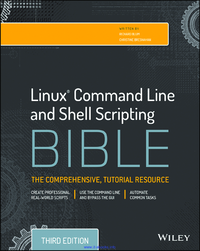
Linux Command Line and Shell Scripting Bible, 3rd Edition
Shell scripting Linux
115 Visitas | 190 Descargas | 2015-04-20 12:44:27 | cbustillo
Linux Command Line and Shell Scripting Bible is your essential Linux guide. With detailed instruction and abundant examples, this book teaches you how to bypass the graphical interface and communicate directly with your computer, saving time and expanding capability. This third edition incorporates thirty pages of new functional examples that are fully updated to align with the latest Linux features. Beginning with command line fundamentals, the book moves into shell scripting and shows you the practical application of commands in automating frequently performed functions. This guide includes useful tutorials, and a desk reference value of numerous examples. The Linux command line allows you to type specific shell commands directly into the system to manipulate files and query system resources. Command line statements can be combined into short programs called shell scripts, a practice increasing in popularity due to its usefulness in automation. This book is a complete guide providing detailed instruction and expert advice working within this aspect of Linux.
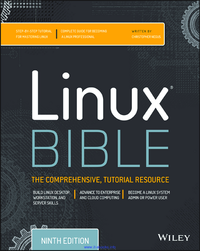
Linux Bible, 9th Edition
Linux
185 Visitas | 305 Descargas | 2015-09-18 01:07:57 | cbustillo
Linux Bible, 9th Edition is the ultimate hands-on Linux user guide, whether you're a true beginner or a more advanced user navigating recent changes. This updated ninth edition covers the latest versions of Red Hat Enterprise Linux 7 (RHEL 7), Fedora 21, and Ubuntu 14.04 LTS, and includes new information on cloud computing and development with guidance on Openstack and Cloudforms. With a focus on RHEL 7, this practical guide gets you up to speed quickly on the new enhancements for enterprise-quality file systems, the new boot process and services management, firewalld, and the GNOME 3 desktop. Written by a Red Hat expert, this book provides the clear explanations and step-by-step instructions that demystify Linux and bring the new features seamlessly into your workflow. This useful guide assumes a base of little or no Linux knowledge, and takes you step by step through what you need to know to get the job done.
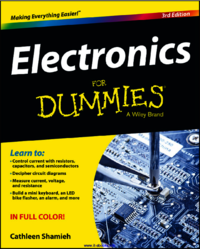
Electronics For Dummies, 3rd Edition
Electrónica
124 Visitas | 164 Descargas | 2015-11-27 14:23:53 | cbustillo
Electronics For Dummies, 3rd Edition is Packed with hundreds of colorful diagrams and photographs, this book provides step-by-step instructions for experiments that show you how electronic components work, advice on choosing and using essential tools, and exciting projects you can build in 30 minutes or less. You'll get charged up as you transform theory into action in chapter after chapter! Circuit basics: learn what voltage is, where current flows (and doesn't flow), and how power is used in a circuit; Critical components: discover how resistors, capacitors, inductors, diodes, and transistors control and shape electric current; Versatile chips: find out how to use analog and digital integrated circuits to build complex projects with just a few parts; Analyze circuits: understand the rules that govern current and voltage and learn how to apply them; Safety tips: get a thorough grounding in how to protect yourself - and your electronics - from harm.
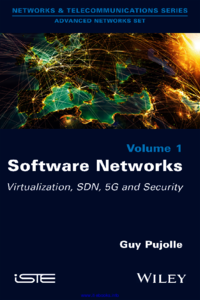
Software Networks
Networking
115 Visitas | 136 Descargas | 2015-11-27 14:27:55 | cbustillo
The goal of this book is to describe new concepts for Internet next generation. This architecture is based on virtual networking using Cloud and datacenters facilities. Main problems concern 1) the placement of virtual resources for opening a new network on the fly, and 2) the urbanisation of virtual resource implemented on physical network equipment. This architecture deals with mechanisms capable of controlling automatically the placement of all virtual resources within the physical network. In this book, we describe how to create and delete virtual networks on the fly. Indeed, the system is able to create any new network with any kind of resource. We will show how this architecture is compatible with new advances in SDN, new high-speed transport protocol like TRILL and LISP, NGN, IMS, Wi-Fi new generation, and 4G/5G networks. Finally, we introduce the Cloud of security and the virtualisation of secure elements (smartcard) that should definitely transform how to secure the Internet.
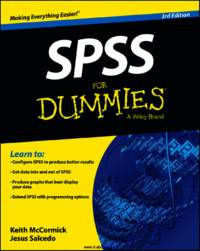
SPSS Statistics for Dummies 3rd edition
59 Visitas | 82 Descargas | 2016-08-26 13:22:22 | alejandromorales
This is fundamentally a reference book. Parts of the book are written as stand?alone tutorials to make it easy for you to get into whatever you’re after. Once you’re up and running with SPSS, you can skip around and read just the sections you need. You really don’t want to read straight through the entire book. That way leads to boredom. We know — we went straight through everything to write the book, and believe us, you don’t want to do that. This book is not about math. It’s about statistics. You don’t derive anything. You don’t do any math by hand or look up numbers in statistical tables. You won’t find one explanation of how calculations are performed under the hood. This book is about the things you can do to command SPSS to calcu- late statistics for you. The inside truth is that you can be as dumb as a post about statistical calculation techniques and still use SPSS to produce some nifty stats!
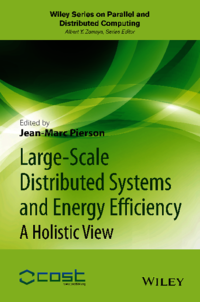
Wiley Series on Parallel and Distributed Computing : Large-scale Distributed Systems and Energy Efficiency : A Holistic View
95 Visitas | 101 Descargas | 2017-02-14 07:38:36 | raulito
The focus and context of the book is on energy efficiency in large-scale distributed systems. These systems consist of thousands of heterogeneous elements that communicate via heterogeneous networks and provide different memory, storage, and processing capabilities. Examples for very large-scale distributed systems are computational and data grids, data centers, clouds, core and sensor networks, and so on. The target audiences of the book are manifold: from IT and environmental researchers to operators of large-scale systems, up to small and medium enterprises (SMEs) and startups willing to understand the global picture and the state of the art in the field. It helps in building strategies and understanding upcoming developments in the rapid field of energy efficiency to speedup transfer of technologies to industries. This book is one major outcome of the European Cooperation in Science and Technology (COST) Action IC0804. The COST Action instrument is a 4-year funding scheme in European research framework aimed at helping the development of networks of researchers.1 The funding goes mainly to four main objectives: (i) to organize meetings on a specific field with experts of the members’ countries and to foster closer cooperations; (ii) to help exchanges of researchers through short-term scientific missions (STSM), for a duration of 1 week to several weeks; (iii) to develop the young researchers’ skills in the field through the organization of annual training schools; and (iv) to shape and rethink the research agenda on the field. One important information at this stage is that COST Actions do not fund research directly: individual projects still rely on European and national funding agencies. The COST Action IC08042 finds its root in 2008. It was started in May 2009 and finished in May 2013. The COST Action IC0804 investigated energy efficiency in large-scale distributed systems. These systems include, among others, wired and wireless networks, high performance computing, cloud and desktop computing, and smart grids. The scientific outcome of the Action has been numerous and will be detailed in the rest of this book. At the end of the Action duration, 23 European countries, and 7 non-European institutions, were members of the Action. About 150 researchers participated on the various Action activities, coming from academy and industry (including IBM, Microsoft, Intel, Yahoo, Ericsson, and EDF and also various SMEs and startups originated during the 4 years). Twenty-four STSM have been organized, and altogether more than 76 joint publications have been released
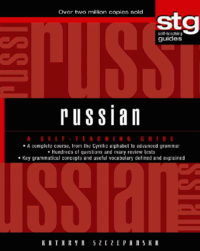
Russian a self-teaching guide
107 Visitas | 104 Descargas | 2018-06-11 18:13:26 | hlugo
Libro sobre gramática rusa que hace especial énfasis en los casos gramaticales propios de este idioma y otros aspectos.
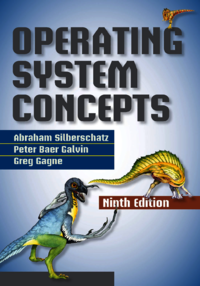
Operating Systems Concepts
Operating Systems
67 Visitas | 68 Descargas | 2018-06-15 19:28:38 | osmanir
Operating systems are an essential part of any computer system. Similarly, a course on operating systems is an essential part of any computer science education. This field is undergoing rapid change, as computers are now prevalent in virtually every arena of day-to-day life —from embedded devices in automobiles through the most sophisticated planning tools for governments and multinational firms. Yet the fundamental concepts remain fairly clear, and it is on these that we base this book.
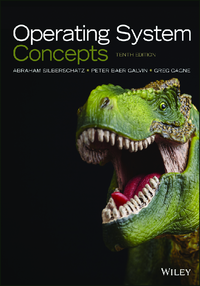
Operating Systems Concepts Tenth Edition
Operating Systems
63 Visitas | 47 Descargas | 2019-02-25 13:54:42 | osmanir
Operating systems are an essential part of any computer system. Similarly, a course on operating systems is an essential part of any computer science education. This field is undergoing rapid change, as computers are now prevalent in virtually every arena of day-to-day life—from embedded devices in automobiles through the most sophisticated planning tools for governments and multinational firms. Yet the fundamental concepts remain fairly clear, and it is on these that we base this book.
Contribuir
Usted puede contribuir con Libros UCLV, es importante para nosotros su aporte..
Contribuir